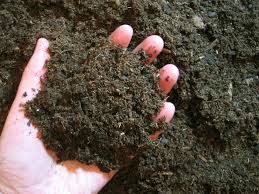Over the years, whenever I meet with new customers about re doing their yard whether it be replacing the lawn. adding new plant beds etc, the question of soil comes up. “Should we replace our soil?” “Our soil is terrible and nothing grows well.” “What can be done about our clay soil?” These are great questions that are easily answered.
In basic terms, “What is Soil?” “Isn’t soil just basically dirt?” Actually soil is a “Living System” It is made up of mineral and organic particles of various sizes. These would be sand, clay, silt, and humus material. And then there is air, water and living organisms.
Did you know that “living soil” provides the structure for more life and therefore the formation of more soil? Healthy soil has what is called gums and polysaccharides which are produced by microbes breaking down and decomposing roots and other organic soil matter. These are sticky substances that glue soil minerals into little lumps called “aggregates” which then clump (glued) together into peds ( a naturally formed unit of soil structure, “McGraw- Hill Science & Technology Dictionary). When soil is well aggregated it breathes, absorbs moisture and makes it easier plant roots to grow and soil invertebrates to move around. This creates an environment for microbial activity, nutrient recycling and vigorous plant growth (Christine Jones, How To Build Tops Soil).
Mulching is one of the best ways to begin to improve your soil over time. By adding a layer of mulch every couple years and allowing nature to take its course, your garden soil will improve over time.
Composting is an obvious answer; Leaves that are raked up, vegetable and garden waste, paper shredding, woody cuttings, straw, lawn cuttings, etc. It is a good idea to try for 3 part leafy green to 1 part woody or brown stuff. Let the material sit for a year and the bottom layer is probably ready for the garden.
Worm castings (Vermicomposting) are another great way to improve soil. Vermicomposting is the product or process of composting utilizing various species of worms, usually red wigglers, white worms, and earthworms to create a heterogeneous mixture of decomposing vegetable or food waste, bedding materials, and vermicast. Vermicast, similarly known as worm castings, worm humus or worm manure, is the end-product of the breakdown of organic matter by a species of earthworm.[1] (Wikipedia)
Double Digging is another way to improve soil. This is a process where you turn the soil over to a depth of 2 spades. This is different than “tilling” the soil as rototilling can pulverize the soil to the point that it can actually increase compaction. Of course if you have a large area to work tilling is the preferred and cost effective method.
Remember, all good gardeners grow soil not just plants.

